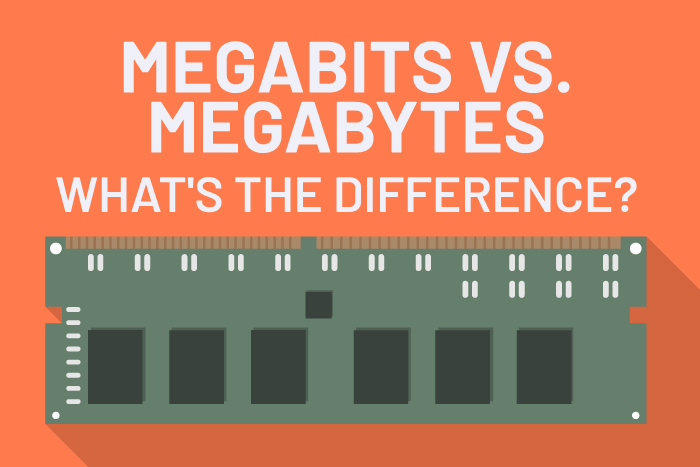Megabits vs. Megabytes: Here is How They Are Different
Megabits per second (Mbps) and megabytes per second (MBps): they sound almost the same, and, other than a slight capitalization difference, they are abbreviated exactly the same. So what differentiates these two technical terms?
The simple answer is measurement. Megabits and megabytes are units of measurement or data. Let’s take a closer look at what makes them different and how they are used.
In this article you will find out...
Bits vs. Bytes
As you’ve already learned, bits and bytes are metric units, but bytes are eight times bigger than bits. Every byte is made up of eight bits. Therefore, when something is measured in bytes, it is eight times larger than the corresponding bit measurement. For example:
1 megabyte (1 MB) = 8 megabits (8 Mb)
8 megabytes (8 MB) = 64 megabits (64 Mb)
If you’ve shopped for internet plans, you may have noticed the company promoting their speeds either in bits or bytes. Internet service providers (ISP) offering broadband speeds often measure their internet speeds in terms of megabits per second. Companies with mobile and internet plans that have data caps are more likely to measure in megabytes per second.
Another slightly smaller and less critical difference between the two is the abbreviation. You may see megabit abbreviated as “Mb” or “Mbit” and megabits per second as “Mbps.”
Megabyte is abbreviated as “MB” and megabytes per second as “MBps” or “MB/s.”
What Are Megabits Used For?
The digital world is made up of ones and zeros, on or off. The bit is a single binary digit and the smallest unit of data used in digital services and devices. Megabits are used by internet service providers to measure how fast an internet connection is (bandwidth) and are usually referred to as “bit rates.”
How is this achieved? When you visit a website or send an email, it gets broken into packets, sent in different directions, and then arrives at your computer rearranged but whole. It’s kind of like how the transporter works in Star Trek. A person’s molecular structure gets scrambled and put back together on the other side.
This somewhat chaotic data flow isn’t easy to divide into bytes, so its speed is generally measured using megabits per second.
In a nutshell, megabits are used to measure:
- Upload speeds
- Download speeds
- Data transfer rates
- Bandwidth
It’s also important to note that there is a difference between bandwidth and internet speed. Basically, internet bandwidth relates to how much data can be uploaded or downloaded from your computer, and internet speed is how fast the data can be sent to your computer.
Two people with the same megabit connections (internet speeds) may have very different download speeds due to their location within their particular city.
What Are Megabytes Used For?
In ye olden days of computing, megabytes were the minimum amount of memory a computer could process, and each byte corresponded to a text character. Files are much more complex these days, but we still use megabytes to measure file size, storage, and computer memory.
Hard drives, RAM, and computer files are all measured in bytes. Megabytes are the smallest unit of memory in a computer. For example, to store data for one standard character, you would need one byte of memory. To store the word “computer,” you would need eight bytes of memory, one for each letter.
In a nutshell, megabytes are used to measure anything related to files and storage, including:
- Computer file sizes (videos, photos, documents, etc.)
- Solid-state drives
- Cloud services
- Computer storage
If you’re having trouble keeping track, don’t worry. We know all the numbers and technical jargon can seem a bit overwhelming. Still, all you need to remember about the difference between megabytes and megabits is that storage capacity is measured in bytes, and speed is measured in bits.
Summing Up Megabits and Megabytes
The key takeaway here is that megabits per second (Mbps) measure data speed, and megabytes per second (MBps) measure data volume. Bits are smaller than bytes, and it takes eight megabits to make a byte. If you want to convert bits to bytes, divide the value by eight.
This information may not seem like such a big deal for anyone outside of the tech industry, but knowing the difference between bits and bytes can help you navigate the tech world, especially related to the internet technology and digital devices.
Next time you’re in the market for an ISP or want to know how long it will take to download a file, you’ll have a better understanding of what’s involved.

